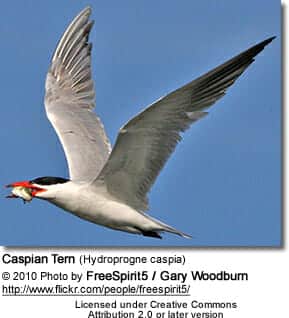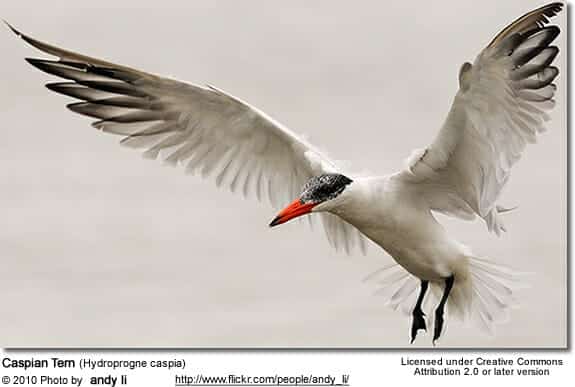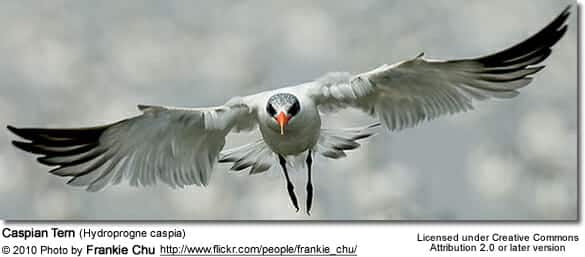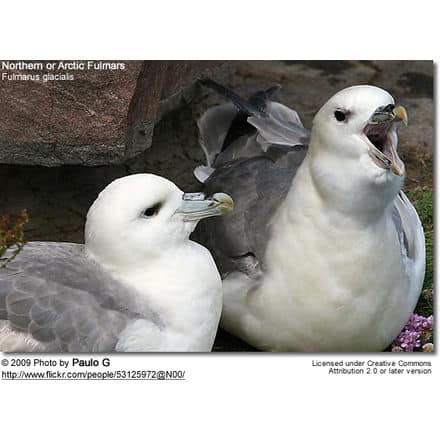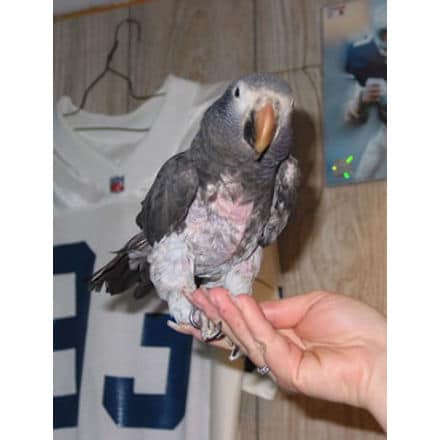Caspian Terns
The Caspian Terns (Hydroprogne caspia) is also known as Taranui (Maori language).
Description
The Caspian Tern is the largest tern, measuring 48–56 cm, including its tail. It has a wingspan of 127–140 cm and weighs 574–782g.
Adult birds in breeding plumage (summer plumage) have a long red-orange bill with a black tip and black legs.
In the winter plumage, the black cap is still present, but there is some white streaking on the forehead.

The head is white except with the black (possibly streaked) cap and white neck, belly, and tail.
The upper wings and back are a pale grey. The wings below are pale with dark primary (flight) feathers.
In flight, the Caspian Tern’s tail appears to be less forked than the tails of other terns.
Distribution / Range
The Caspian Terns occur naturally at large lakes and ocean coasts in North America (including the Great Lakes), and locally in Europe (mainly around the Baltic Sea and the Black Sea), Asia, Africa, and Australasia (Australia and New Zealand).
Those found in North America migrate south to the West Indies and northernmost South America for the winter.
European and Asian birds migrate to the tropical areas.
Those found in Africa and Australasia birds are mostly resident (non-migratory).

Diet / Feeding
Their staple diet consists of fish, but they will also occasionally take large insects, as well as eggs and chicks of other birds.
When foraging for food, they may hover over the water and then plunge into it to catch the prey.
Call / Song
The call is a loud heron-like croak.
Breeding
Caspian Terns breed in the spring and summer. They nest in colonies, sometimes in mixed with other tern and gull species.
The nest is placed on the ground among gravel and sand, or sometimes on vegetation.
The average nest consists of one to three pale blue-green eggs, with heavy brown spotting. The eggs are incubated for 26 – 28 days. The chicks have plumages that range from pale creamy to grey-brown. The young fledge when they are about 35 – 45 days old.



